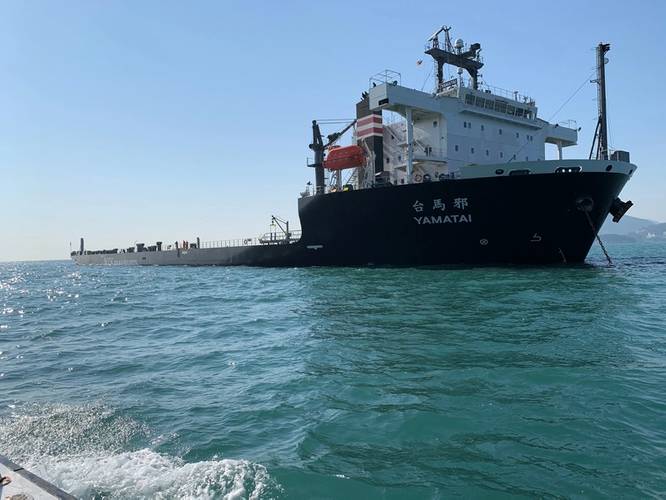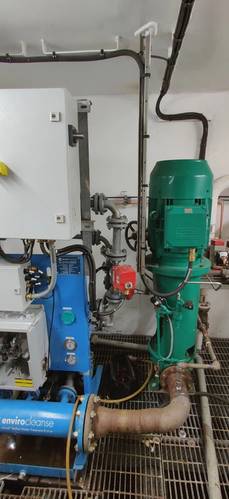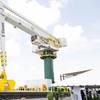Q&A: Inside the Scienco InTank Ballast Water Treatment System
Rudy Mes and Giles Candy of Scienco/FAST discuss advantages for ship owners and shipbuilders with the Scienco InTank Ballast Water Treatment System.
- How doest the InTank system stand out?
Rudy Mes We found that most vessels have issues (when) treatment is being done during the intake of ballast water or during de-ballasting, as it puts a strain on power consumption and pump capacity. So we decided we’re not going to treat the water while we’re in port, we’re going to treat it during the voyage. (By treating the ballast water during the voyage) it doesn’t put any restraints on the cargo operations and the crew is less busy, so it’s also less stressful on them, too.
- OK, so how specifically do you treat ballast water during the voyage?
Rudy Mes We take water on with the full capacity of the ballast pumps. And then during the voyage, we treat the ballast water with sodium hypochlorite that regenerates in an electric coordination cell. We bring that into the ballast tanks and with nozzles we make sure that there is a circulation created in that tank to get the full ballast tank treated with the sodium hypochlorite. Then we have a 24 hour hold time. So the total minimum treatment time to treat an entire vessel is about 36 hours. When you come to port, all tanks are treated, so while in port, you can use the full capacity of the ballast pumps to unload your ballast water. That’s a big operational benefit.
- Can you give a full rundown of the advantages of the InTank system as you see it?
Giles Candy The reason I got involved with InTank in 2016 was it was a fundamentally different way of approaching ballast water treatment, a much more elegant, a more simple solution to the problem. As Rudy said, we’re treating in the tank during the voyage. Why does that bring specific advantages? Well, as Rudy said, all of the ballasting operations that a vessel would normally complete in port are done completely as normal. You have no filters, you have no care what type of ballast you are ballasting, whether it’s fresh, high turbidity, low turbidity, high biological load, low biological load, hot or cold: it really doesn’t matter.
So that’s a fundamental difference to every other ballast water treatment system on the market. Now, InTank does not remove the work of ballast water treatment. You still have do it. But it displaces that work from the port to the voyage, and we’re probably around 36 hours voyage time required to complete treatment on most vessels.
It will start dosing the sodium hypochlorite and the circulation will go to the tank, and the water in the tank will use a certain amount of TRO. In different waters; clean Caribbean water will barely use any. Mississippi water might be chew through that TRO at a higher rate. One of the major advantages of InTank is that this system has control over the degree of treatment it offers. With InTank, after a certain number of hours, the system revisits the tank and has a look at the TRO level. Now, if it was Mississippi mud that chewed through the TRO, we can add more. So you’re controlling your treatment.
Once treatment is complete, you then control your neutralization. So you have neutralized the water before discharge. If there is an issue (with the system), you’re at sea, so hopefully you can fix that issue and complete treatment without impacting the commercial operation of the vessel. It gives so much more control to the operation of the vessel.
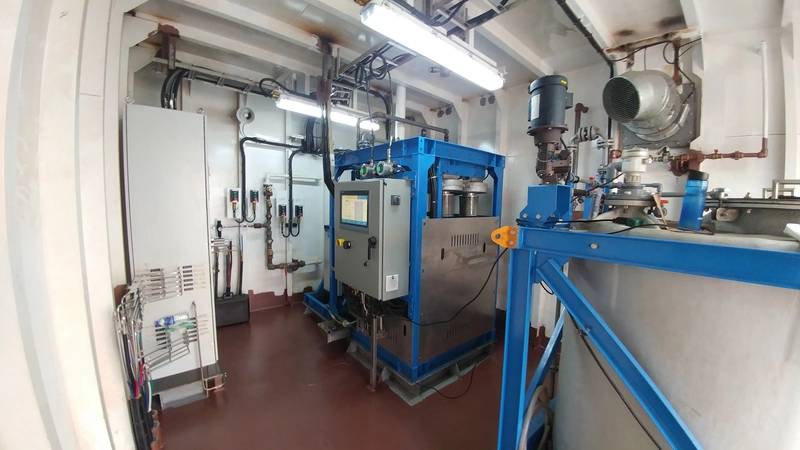 InTank EC Module and DeChlor Unit. Photo courtesy SciencoFAST
InTank EC Module and DeChlor Unit. Photo courtesy SciencoFAST
- Ship owners want to spend as little time as possible in the shipyard, and the retrofit of BWMS on existing ships can be an engineering headache. What is a typical timeframe and process to get the InTank system installed?
Rudy Mes From the first contact we ask a lot of questions about the vessel specifics: ballast water capacity, number of tanks, etc., and then we start calculating three different options of the system that we could offer, options to consider different treatment times, different operational costs and initial investment costs. Based on the readiness of the vessel owner to share information, this process can be finished in a couple of days. When we sign a project contract with the owner, then we start the application engineering, which is determining (things like) how big the circulation pumps are going to be, how big the feed pumps are going to be, how many nozzles are in each tank to get good circulation. That process takes about two weeks. After that, we have integration engineering, looking at the tying points to the existing ballast system, integration with the existing automated valves on board (and pipe runs throughout the ship). That’s a process that normally takes about eight weeks.
Normally, when we have a signed contract, the minimum time we need to send it out is about 16 weeks. Our production capacity is not an issue; it’s more the third party (ie. pump and valve manufacturers) that puts a limitation on the availability of the system for the vessel owner.
- Looking at the system holistically, are there any advantages for the shipyard?
Rudy Mes Our system is relatively small, about a 7 sq. m. footprint (and it comes in smaller models), so normally it’s easy for the shipyard to bring the equipment into the pump room or the engine room; they don’t have to cut holes in the deck or inside the ship. During our integration engineering we can provide isometrics for all the piping, so the shipyard can prefabricate the spools so that when the vessel comes in the yard it’s a relatively easy effort to install all that piping. If the vessel owner wants to keep the time they spent at the ship yard as short as possible, a large part of the installation can be done during voyage.
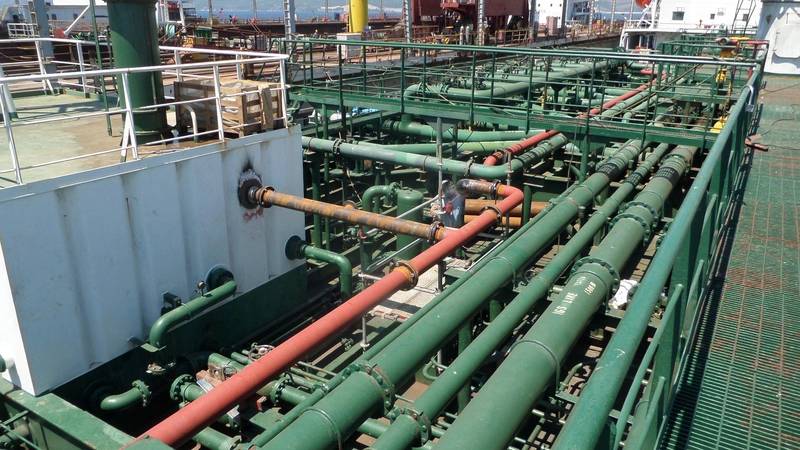 InTank Dosing Modue in existing Deckhouse. Photo courtesy SciencoFAST
InTank Dosing Modue in existing Deckhouse. Photo courtesy SciencoFAST
- What about compliance?
Giles Candy Compliance is not talked about all that much at the moment. From the IMO’s point of view, we’re in the experience building phase. So it’s no harm, no foul really at the moment. In the U.S. it is much more a paperwork exercise. There is very little biological analysis being completed. And in times of COVID, I think as long as there’s not gross non-compliance, things are relatively relaxed. This is odd for a convention that was final in 2004, as here we are in 2021, and we still don’t actually know how compliance is going to be assessed. It is on the agenda for MEPC.
And I would think by ‘24, maybe ‘25, there will be some hard guidelines for assessing compliance, but there are really two forms of compliance. One is technical and the second is biological. We don’t have any real biological metrics or enforcement at the moment.
There is some technical enforcement. You’ve got to have a type-approved system on board and it should be working and operated correctly.
The next step is biological compliance and SGS recently issued a study completed with the Australian authorities showing more than 30% of discharges were non-compliant, non-compliance by over an order of magnitude for zooplankton. There is an army of compliance monitoring device companies proffering all sorts of solutions for quick analysis of biological load on the discharge and the standards are very high. This is something that’s underestimated and you can be starting with a million zooplankton per cubic meter, quite regularly, a hundred thousand zooplankton per cubic meter. And you have to get down to less than 10. So this is a very high-performance treatment in order to succeed.
And if you’re just relying on filters for that, those filters have to perform really well all the time. InTank is designed to be robust enough to work without a filter. Whatever the water quality, the operator has complete control over compliance, both technical and biological.







